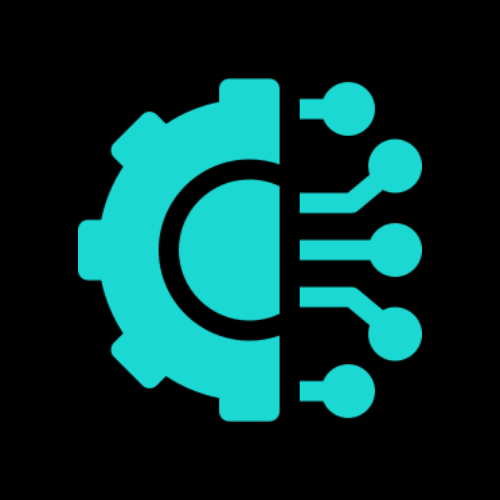Introduction
In today’s remote-first world, clear communication is the lifeline of productivity. As more companies embrace flexible work models, teams are spread across different time zones, countries, and even continents. This makes real-time collaboration Remote Team Communication Tools both essential and challenging. Whether it’s daily stand-ups, brainstorming sessions, or quick project updates, remote communication tools have become the digital bridges that connect teams, foster transparency, and maintain efficiency.
Without the right tools, remote employees can feel disconnected, miscommunications can multiply, and productivity can drop. That’s why choosing the right communication platforms isn’t just about convenience; it’s a strategic move that shapes company culture and workflow.
In this article, we’ll explore the best remote team communication tools you must know in 2025, what makes them stand out, and how they can help your team stay connected, engaged, and efficient.
Slack: The Virtual Office Hub
Real-time Messaging and Collaboration
Slack remains the go-to communication tool for remote teams worldwide. It’s more than just a chat app; it’s a full-fledged collaboration platform designed to streamline communication through channels, direct messages, and integrations. Teams can create dedicated channels for projects, departments, or clients, making discussions organized and searchable.
The platform’s threaded messaging keeps conversations focused and easy to follow, reducing the chaos often seen in long email threads. For quick coordination, Slack’s voice and video call options allow seamless transitions from text to face-to-face interaction.
Integrations and Workflow Automation
One of Slack’s biggest strengths lies in its integrations. With over 2,000 third-party apps, including Google Drive, Trello, Zoom, and Asana, teams can manage projects, share files, and automate routine updates directly within Slack. The new AI-powered “Slack Canvas” feature helps summarize discussions and generate insights, saving time during meetings.
For remote teams juggling multiple tools, Slack acts as a centralized communication hub, helping everyone stay aligned without constantly switching tabs.
Microsoft Teams: Perfect for Corporate Remote Setups
All-in-One Collaboration Suite
Microsoft Teams has evolved into one of the most powerful communication platforms for hybrid and remote work environments. Built into the Microsoft 365 ecosystem, Teams integrates seamlessly with Word, Excel, PowerPoint, and Outlook, making it the ideal solution for businesses that already rely on Microsoft tools.
Remote workers can chat, hold video conferences, and Remote Team Communication Tools collaborate on documents in real time without leaving the app. Teams also supports channels, shared files, and task management features that rival any standalone collaboration software.
Enterprise-Grade Security and Scalability
What sets Microsoft Teams apart is its enterprise-level security. With end-to-end encryption and advanced compliance options, it’s trusted by organizations that handle sensitive data. Its scalability also makes it perfect for large teams spread across time zones, ensuring reliable performance during high-capacity video meetings and global collaboration.
For remote employees, Teams combines structure, security, and simplicity, creating a reliable digital workspace that mirrors in-office productivity.
Zoom: Video Communication Made Effortless
Beyond Meetings: A Complete Communication Platform
Zoom revolutionized the way remote teams communicate during the pandemic, and it continues to dominate in 2025. Known for its user-friendly interface and HD-quality video, Zoom remains the top choice for meetings, webinars, and virtual events.
What started as a video conferencing tool has now expanded into a full communication suite, including Zoom Chat, Zoom Phone, and Zoom Rooms. These features make it easier for remote teams to hold meetings, send quick updates, and even create digital meeting rooms that replicate physical collaboration spaces.
Enhanced Collaboration and AI Tools
Zoom’s latest AI companion helps users summarize meetings, generate transcriptions, and provide action points automatically, ensuring nothing gets missed, even if someone joins late. With its breakout rooms, whiteboard collaboration, and emoji reactions, Zoom brings energy and interaction to virtual meetings, making them more engaging than ever.
For remote workers, Zoom isn’t just a communication tool; it’s a connection platform that humanizes remote work and builds team rapport.
Google Meet & Google Chat: Seamless for G Suite Users
Integration with Google Workspace
If your remote team uses Google Workspace (formerly G Suite), Google Meet and Chat are natural fits. Google Meet offers a smooth video conferencing experience with easy calendar integration, while Google Chat provides quick text-based collaboration through rooms and spaces.
The best part? Everything syncs effortlessly. You can schedule a meeting on Google Calendar, launch Meet directly from Gmail, or collaborate on a Google Doc, all in one ecosystem. This seamless integration makes Google’s tools an excellent choice for teams that prioritize simplicity and speed.
AI Features and Security
In 2025, Google Meet introduced AI-powered lighting correction, noise cancellation, and live captioning, making communication clearer and more inclusive for global teams. With Google’s strong encryption standards, remote professionals can Remote Team Communication Tools trust that their data and meetings remain secure.
For startups and freelancers, the Google ecosystem offers reliability, accessibility, and a zero learning curve, making it one of the best communication suites for growing remote teams.
Asana + Loom + Notion: The Trio for Visual and Asynchronous Communication
Asynchronous Collaboration Made Easy
Not every conversation needs to happen in real time, and that’s where tools like Asana, Loom, and Notion come in. These platforms help teams collaborate asynchronously, especially across time zones.
- Asana helps teams organize tasks, set deadlines, and track project progress visually.
- Loom allows you to record short video messages to explain ideas, updates, or feedback, perfect for avoiding unnecessary meetings.
- Notion combines note-taking, documentation, and project tracking into one tool, creating a living knowledge base for remote teams.
Creating Efficient Workflows
When used together, these tools build a powerful ecosystem for remote work. A project can be planned in Asana, explained via Loom, and documented in Notion. This reduces communication overload while keeping everyone informed and aligned.
Asynchronous tools empower employees to work at their own pace without sacrificing clarity or collaboration, a key advantage for distributed teams worldwide.
Choosing the Right Communication Tool for Your Team
With so many remote communication tools available, choosing the right one depends on your team’s size, workflow, and goals. For startups and freelancers, Slack and Google Workspace offer flexibility and affordability. For enterprise-level teams, Microsoft Teams and Zoom provide scalability and integration with professional ecosystems.
Consider these factors before deciding:
- Team size and time zones: Larger, distributed teams need structured tools with clear communication hierarchies.
- Workflow complexity: Integrated tools like Slack or Teams reduce context-switching.
- Security and compliance: Choose platforms with strong encryption for handling sensitive data.
- Budget: Free or affordable tools like Google Chat and Loom are great for small teams.
Ultimately, no single tool fits every remote team. The key is finding the right combination of synchronous (real-time) and asynchronous (flexible) tools that balance productivity with well-being.
Conclusion: Building Stronger Remote Connections
Communication is the foundation of every successful remote team. The tools we use shape how we collaborate, share ideas, and build trust across distances. By choosing the right mix of communication platforms, whether it’s Slack for instant messaging, Zoom for meetings, or Notion for documentation, teams can overcome physical barriers and thrive in the digital workspace.
As remote work continues to evolve in 2026 and beyond, investing in effective communication tools isn’t just about efficiency; it’s about creating a culture of connection. When teams communicate well, they innovate faster, engage better, and achieve more together.
Find Your Dream Job Today Explore Endless Career Opportunities and Secure Your Next Role with Best Job Tool







Leave a Reply